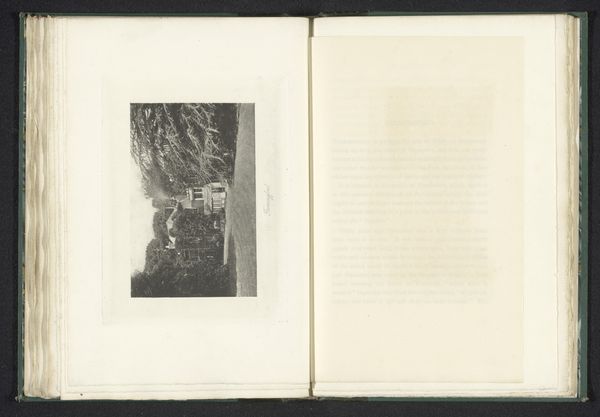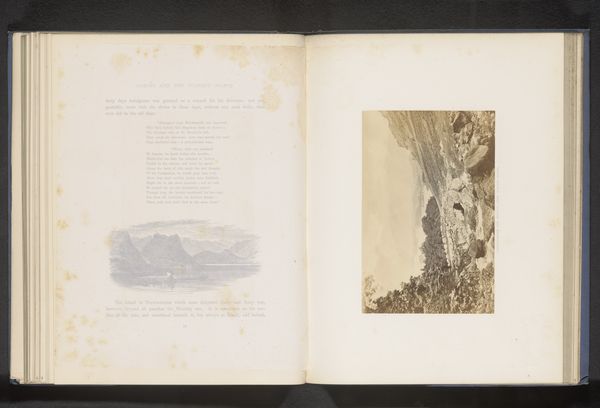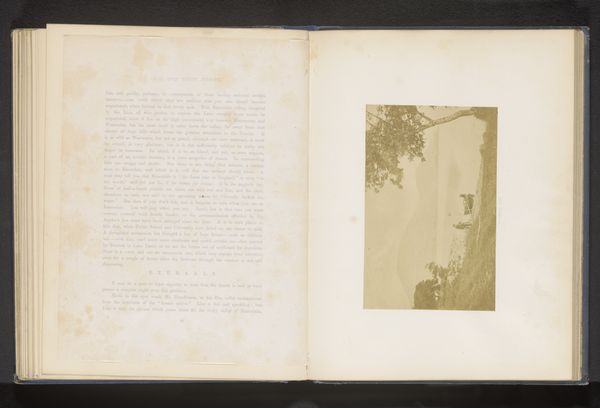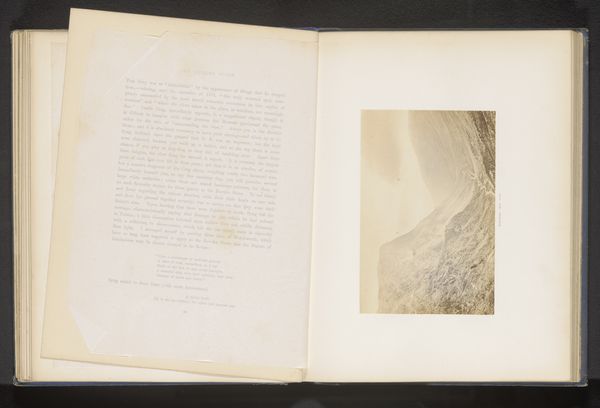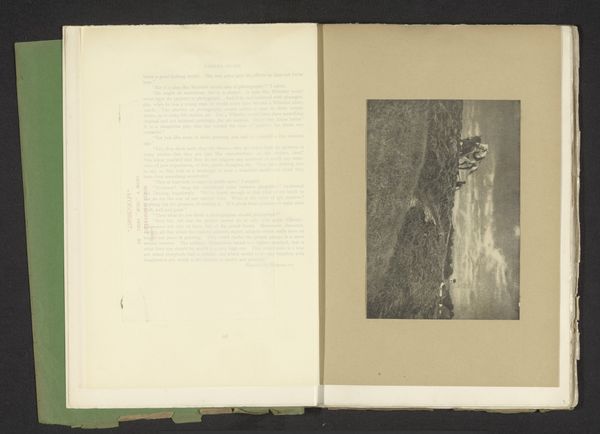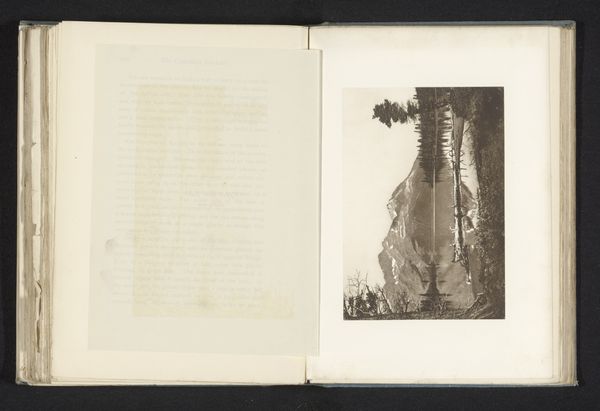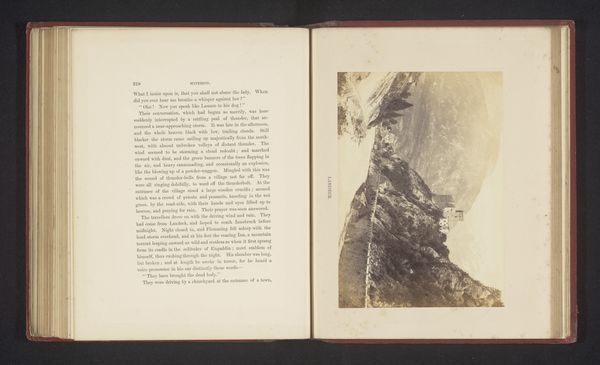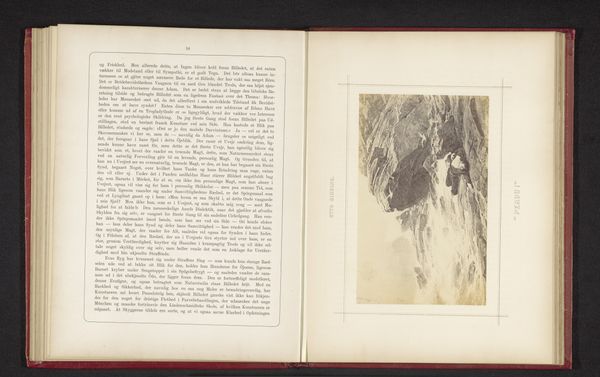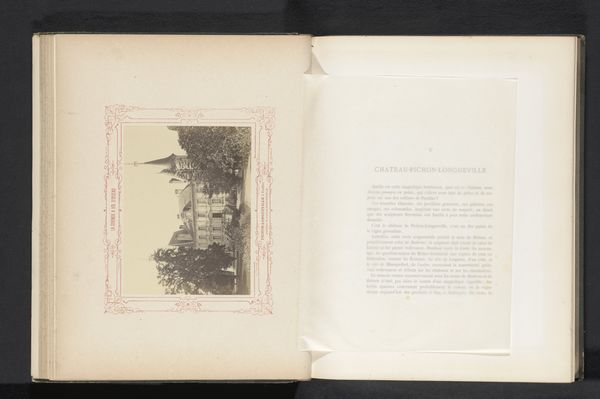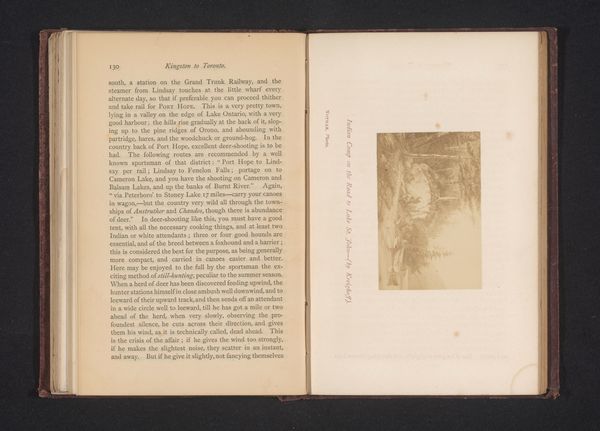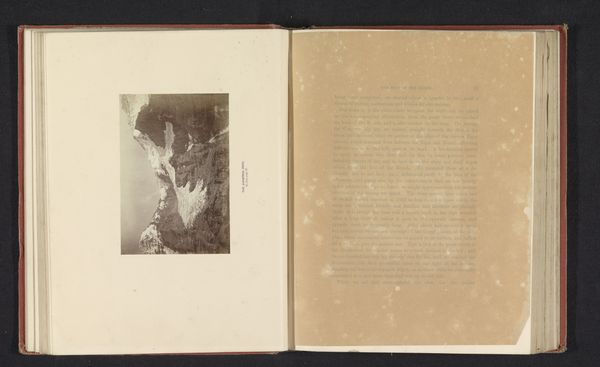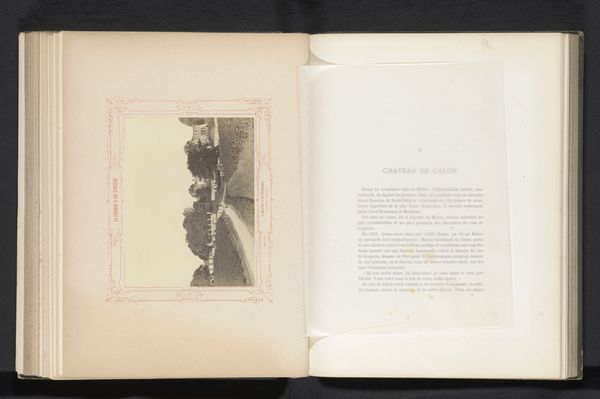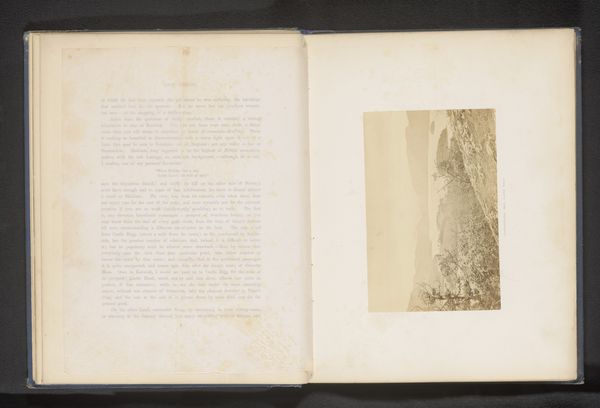
Dimensions: height 108 mm, width 162 mm
Copyright: Rijks Museum: Open Domain
Curator: Here we have a photograph titled “Gezicht op Derwentwater en de berg Skiddaw in het Lake District," made before 1870. Editor: My first impression is one of striking verticality, even tension. The photograph is cropped such that the mountain and the lake it feeds rise and drop within very sharp compositional parameters. Curator: Indeed. What intrigues me most is the question of the working conditions for a landscape photographer operating that long ago. To what extent could a photographer truly take a hand in shaping these remote environments into consumable objects for a Victorian audience? Editor: Interesting question. The photographer’s choices, though—that tightly framed field of vision, the soft focus, the monochrome presentation—all signal a conscious aesthetic strategy. Even in a “natural” landscape, the visual elements feel highly arranged, don't you think? Curator: Perhaps the visual ordering has as much to do with constraints as with design. One must imagine transporting cumbersome equipment across such rugged terrain! The limited technology itself shapes the finished artwork. Editor: Possibly so. And yet, this arrangement undeniably steers the eye, making the sublime almost…palatable. By framing it this way, the raw intensity of nature is tailored to appeal to romantic sensibilities, but is its impact not lessened because of this? Curator: Are you implying it lacks integrity due to those restraints and the nature of commerce? I think this speaks more to the fact that the natural world became rapidly commodified via technologies such as photography at this point in our global history. Editor: Fair enough, I think our disagreement lies in what aspect of the photographic process we find the most merit. Either way, I certainly appreciate how it opens a discussion about not only artistic technique, but also material considerations. Curator: Indeed, and reminds us to appreciate art’s connections to the wider historical landscape.
Comments
No comments
Be the first to comment and join the conversation on the ultimate creative platform.

